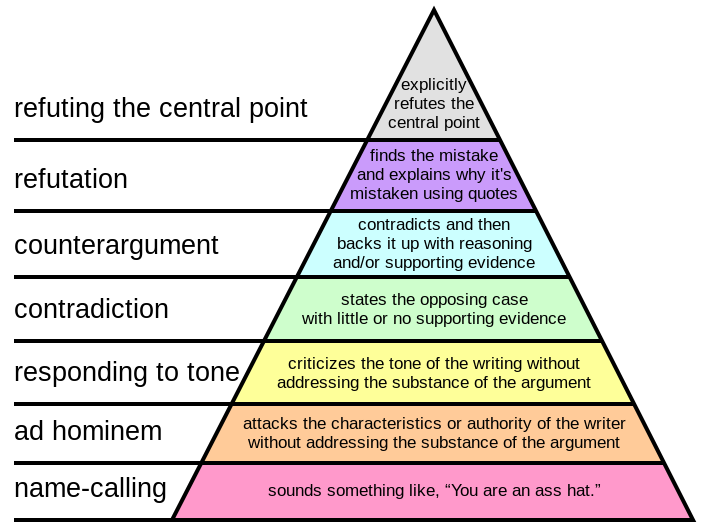How to Disagree (Paul Graham)
The text and the examples it contains are useful. This diagram, from Wikipedia, is a helpful summary:If we're all going to be disagreeing more, we should be careful to do it well. What does it mean to disagree well? Most readers can tell the difference between mere name-calling and a carefully reasoned refutation, but I think it would help to put names on the intermediate stages. So here's an attempt at a disagreement hierarchy ...

At the lowest level, least useful, we have this:
Half-way through, we get to this:DH0. Name-calling.
This is the lowest form of disagreement, and probably also the most common. We've all seen comments like this:
u r a fag!!!!!!!!!!
But it's important to realize that more articulate name-calling has just as little weight. A comment like
The author is a self-important dilettante.
is really nothing more than a pretentious version of "u r a fag."
I think this essay is insightful.DH4. Counterargument.
At level 4 we reach the first form of convincing disagreement: counterargument. Forms up to this point can usually be ignored as proving nothing. Counterargument might prove something. The problem is, it's hard to say exactly what.
Counterargument is contradiction plus reasoning and/or evidence. When aimed squarely at the original argument, it can be convincing. But unfortunately it's common for counterarguments to be aimed at something slightly different. More often than not, two people arguing passionately about something are actually arguing about two different things. Sometimes they even agree with one another, but are so caught up in their squabble they don't realize it.